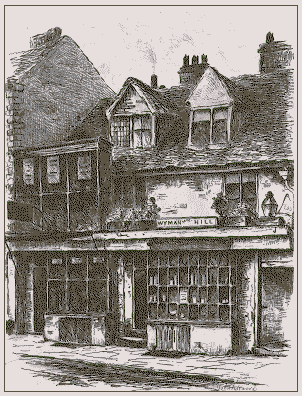| In the 1870s many of
Wolverhampton's old buildings disappeared under a wave of
modernisation and John Fullwood faithfully recorded them before
demolition. In 1880 some of these drawings were included in a set of
etchings in his book called "Remnants
of old Wolverhampton and its environs". The book is one of the few
published records of the City at this time and I have included some
of John's drawings from the book on the following page.
The book
was originally published in parts with descriptive notes
accompanying the etchings signed "E.B." - the local architect,
Edward Banks.
The
first part was enthusiastically reviewed by the Art Journal.
The review may have been written by George Wallis, a regular
contributor and a Wulfrunian.
|

Old shops in Victoria Street by John
Fullwood.
|